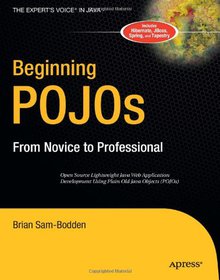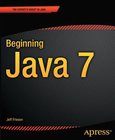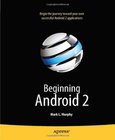Beginning POJOs
Lightweight Java Web Development Using Plain Old Java Objects in Spring, Hibernate, and Tapestry

Book Details:
| Publisher: | Apress |
| Series: | Apress , Beginning |
| Author: | Brian Sam-Bodden |
| Edition: | 1 |
| ISBN-10: | 1590595963 |
| ISBN-13: | 9781590595961 |
| Pages: | 424 |
| Published: | Mar 20 2006 |
| Posted: | Nov 26 2014 |
| Language: | English |
| Book format: | |
| Book size: | 10.96 MB |
Book Description:
Beginning POJOs introduces you to open source lightweight web development using Plain Old Java Objects (POJOs) and the tools and frameworks that enable this. Tier by tier, this book guides you through the construction of complex but lightweight enterprise Java-based web applications. Such applications are centered around several major open source lightweight frameworks, including Spring, Hibernate, Tapestry, and JBoss (including the new lightweight JBoss Seam). Additional support comes from the most successful and prevalent open-source tools: Eclipse and Ant, and the increasingly popular TestNG. This book is ideal if youre new to open source and lightweight Java. Youll learn how to build a complete enterprise Java-based web application from scratch, and how to integrate the different open source frameworks to achieve this goal. Youll also learn techniques for rapidly developing such applications. NOTE: The source code files to accompany this book are now hosted at https://github.com/bsbodden/techconf.
Download Link:
Related Books:
POJOs in Action
Developing Enterprise Applications with Lightweight Frameworks
The standard platform for enterprise application development has been EJB but the difficulties of working with it caused it to become unpopular. They also gave rise to lightweight technologies such as Hibernate, Spring, JDO, iBATIS and others, all of which allow the developer to work directly with the simpler POJOs. Now EJB version 3 solves the problems that gave EJB 2 a black eye-it too works with POJOs. POJOs in Action describes the new, easier ways to develop enterprise Java applications. It describes how to make key design decisions when developing business logic using POJOs, including how to organize and encapsulate the business logic, access the database, manage transactions, and handle database concurrency. This book is a new-generation Java a...
Beginning Java 7
Beginning Java 7 guides you through version 7 of the Java language and a wide assortment of platform APIs. New Java 7 language features that are discussed include switch-on-string and try-with-resources. APIs that are discussed include Threading, the Collections Framework, the Concurrency Utilities, Swing, Java 2D, networking, JDBC, SAX, DOM, StAX, XPath, JAX-WS, and SAAJ. This book also presents an introduction to Android app development so that you can apply some of its knowledge to the exciting world of Android app development. This book presents the following table of contents: Chapter 1 introduces you to Java and begins to cover the Java language by focusing on fundamental concepts such as comments, identifiers, variables, expressions, and state...
Beginning Android 2
The Android development platform, created by Google and the Open Handset Alliance, is a platform in its truest sense, encompassing hundreds of classes beyond the traditional Java classes and open source components that ship with the SDK. With Beginning Android 2, youll learn how to develop applications for Android 2.x mobile devices, using simple examples that are ready to run with your copy of the software development kit. Author, Android columnist, writer, developer, and community advocate Mark L. Murphy will show you what you need to know to get started programming Android applications, including how to craft graphical user interfaces, use GPS, and access web services. What youll learn Discover Android and how to use it to build Java-based mobile ...
2007 - 2021 © eBooks-IT.org



